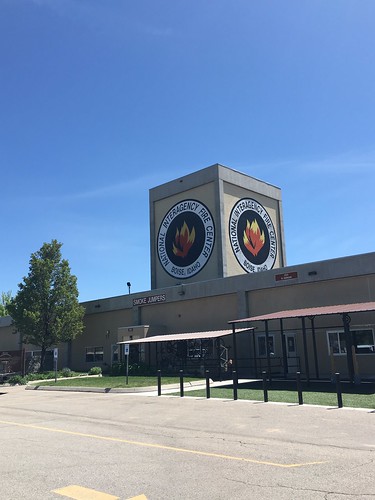
Boise, Idaho is famous among college football fans for the blue turf on the Boise State University Broncos’ field. But in wildland fire management circles, the city is just as well-known as home of the National Interagency Fire Center or NIFC.
NIFC is the nation’s support center for wildland fire management and other types of incidents. Some even refer to it as the Pentagon or nerve center for national wildland fire management.
Earlier this month, Secretary of Agriculture Sonny Perdue visited NIFC with Secretary of the Interior Ryan Zinke, Idaho Governor C.L. “Butch” Otter, and other officials. While there, they received a tour and briefing on the upcoming wildfire season and signed a memorandum (PDF, 64.7 KB) that was sent to wildland fire leadership highlighting the importance of inter-departmental collaboration in protecting communities and managing public lands.
Collaboration is the name of the game at NIFC, which isn’t an organization, but is rather a place where the U.S. Forest Service and eight other federal, tribal, state, and local agencies work together to coordinate national wildland fire management planning and operations to ensure effectiveness and efficiency.
The agencies represented at NIFC share assets (firefighters, aircraft and equipment) and work together to set priorities to allocate these assets. Effectiveness and efficiency are especially critical because no wildland fire management agency has enough assets including firefighters, fire engines, aircraft, or other equipment and machinery to respond to all the wildfires that occur on land under their jurisdiction.
Additionally, the National Interagency Coordination Center or NICC based at NIFC, plays a key role in ensuring that wildland fire managers receive as many of the assets mentioned above that they request as possible.
For strategic purposes, wildland fire managers divided the U.S. into ten geographic areas. All of the agencies located within these geographic areas have assets that they can mobilize to respond to wildfires, but during periods of high fire activity, they typically require more. The geographic areas place orders for additional assets to the NICC which obtains them from other geographic areas, the military, and even from other countries.
“We mobilize and allocate assets based on the principles of closest forces and total mobility,” said Susie Stingley, NICC Manager. “That means that we try to mobilize assets from as close to where they are being requested as possible, but if needed we can get them from anywhere they’re available.”

In addition to the NICC, NIFC is home to many other vital national wildland fire management programs, facilities, and functions, including the National Interagency Incident Communications Division, the largest civilian radio cache in the world that can provide enough radios and repeaters (a device that extends radio coverage) to support more than 50 major disasters at a time; the Great Basin Area Incident Support Cache, which issues about $60 million worth of supplies and equipment on average annually to support wildfires and the Remote Automated Weather Stations Program, which maintains about 1,800 permanent and 75 portable weather stations that provide critical local weather data to fire managers.
NIFC is the envy of wildland fire and emergency management experts around the world because of its seamless interagency cooperation. Each year, wildland fire and emergency management experts from countries such as Greece, Norway, and Morocco, visit NIFC to learn how it operates to improve their operations.
But the highly successful structure of NIFC was not mandated by law, regulation, or policy. What motivates government agencies to work together to ensure that wildfires in the U.S. are managed as effectively and efficiently as possible is simply that this type of cooperation has been proved, time and again, to be a best practice that delivers the benefits of good government and works for all Americans.

